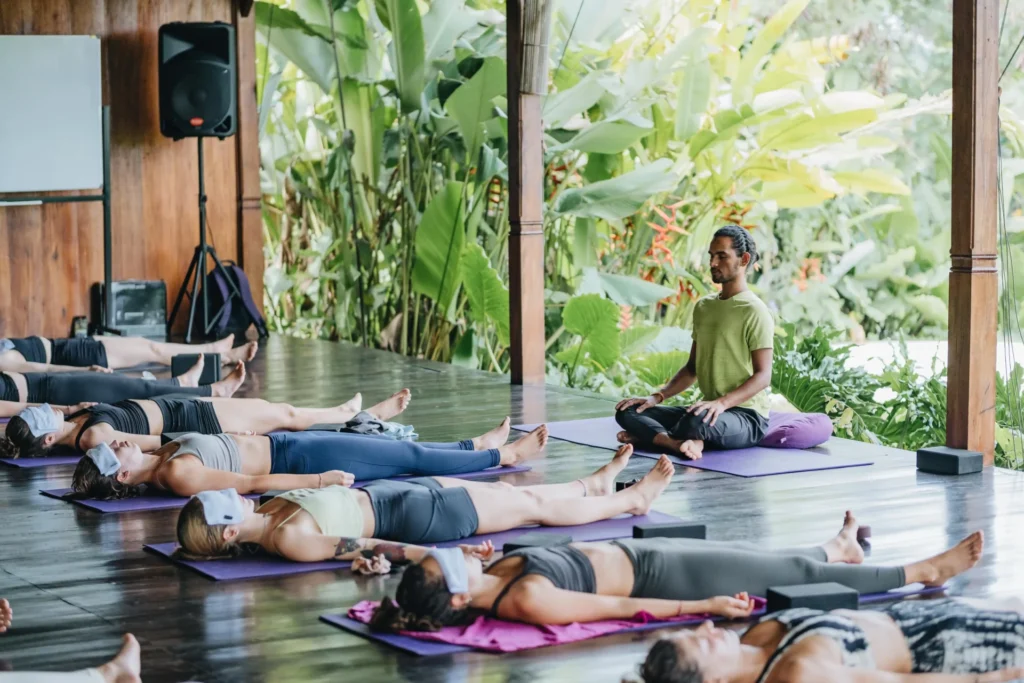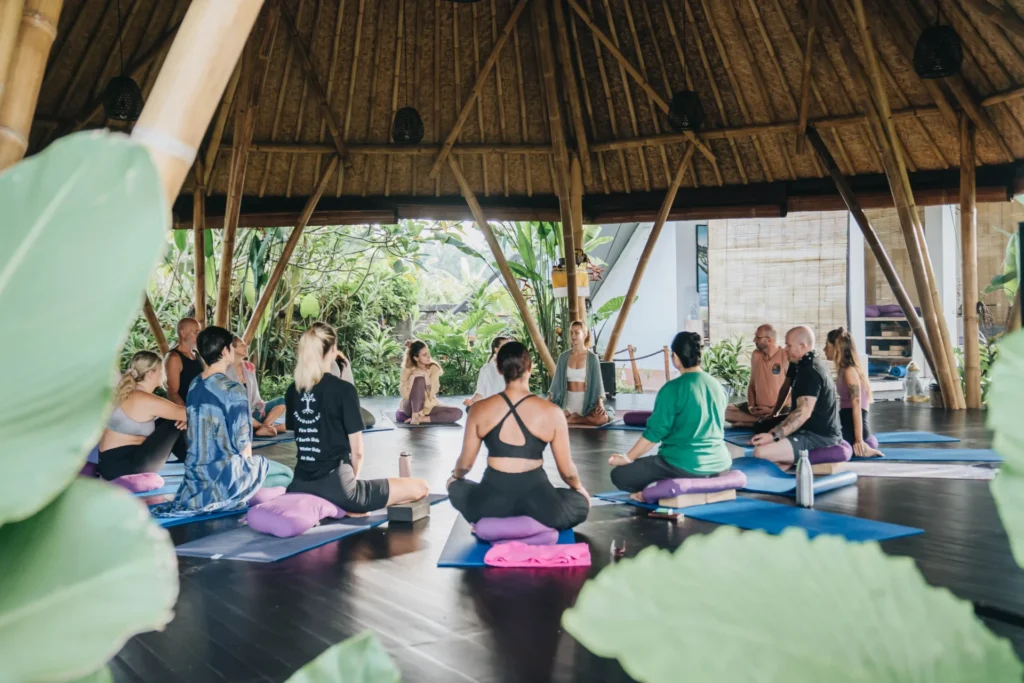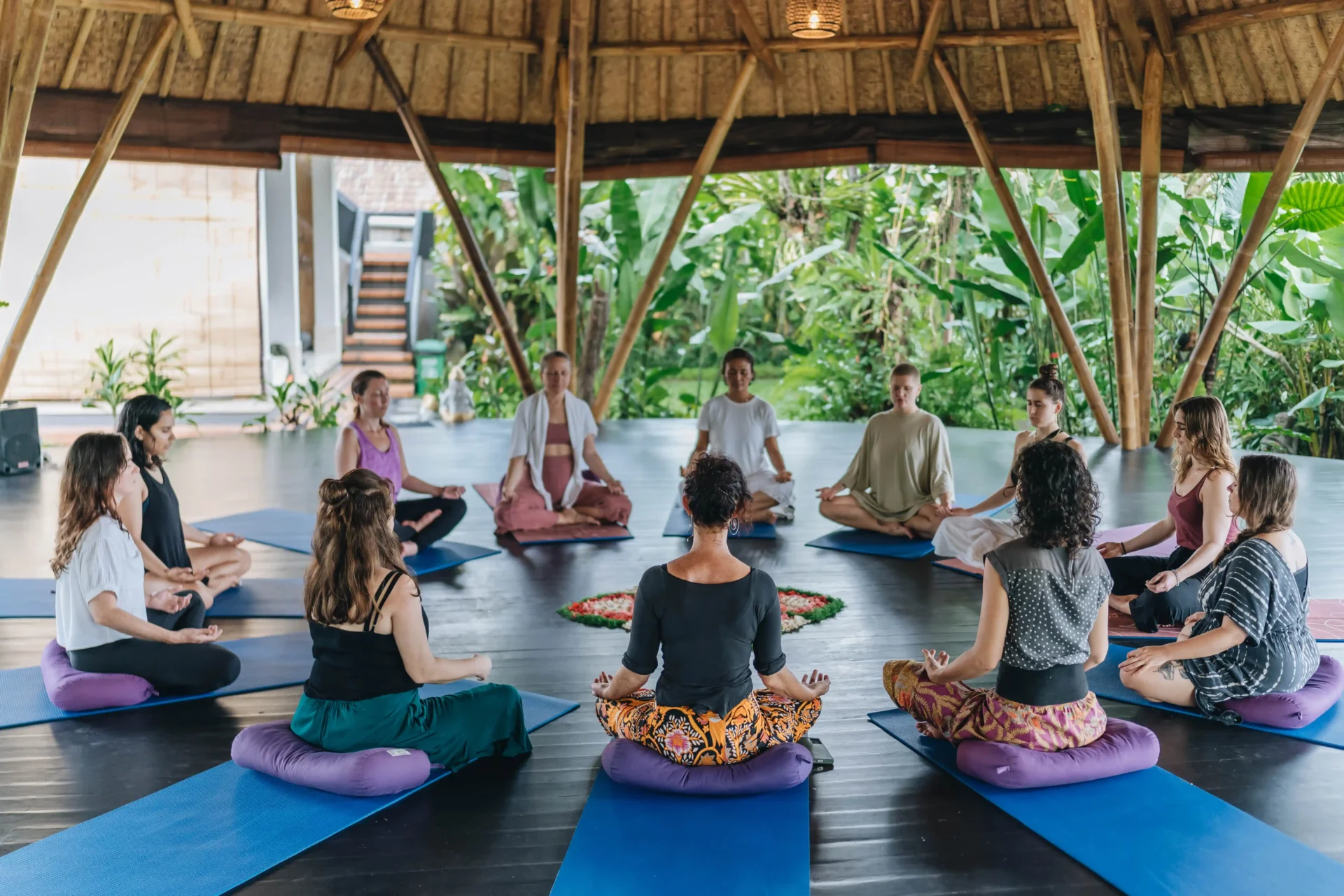Learning how to meditate is a simple yet powerful way to calm the mind, improve focus, and reduce stress. Practiced for thousands of years across cultures, meditation is now widely used to support overall well-being.
Despite its long history, scientific research on meditation is relatively recent. The Cleveland Clinic notes that imaging technologies like EEG and fMRI reveal its positive effects on brain function and mental health. Meditation isn’t just about sitting still. It can also reshape how the brain processes stress, emotions, and pain.
Not to quote Gaston from Ratatouille, but when it comes to meditation, anyone can do it! You don’t need special skills or years of practice to begin. This guide will walk you through the essentials to help you start and build a consistent practice.
Benefits of Meditation
Meditation provides a range of benefits for mental, physical, and emotional well-being. Mentally, it helps reduce stress and anxiety, improves focus and concentration, enhances creativity, and supports emotional regulation. By calming the mind, it allows for clearer thinking and better problem-solving.
Physically, meditation has been shown to lower blood pressure, improve sleep quality, strengthen the immune system, and help reduce chronic pain. These benefits contribute to overall health and a greater sense of well-being.
On an emotional level, meditation increases self-awareness, promotes stability, and fosters patience and compassion. Over time, it helps individuals develop a more balanced and mindful approach to life.
Preparing for Meditation
Before you start meditating, setting up the right environment can help you stay focused and relaxed.
- Find a quiet space – Choose a spot where you won’t be disturbed.
- Get comfortable – Sit on a cushion, chair, or even lie down if that’s more comfortable.
- Wear loose clothing – Tight or uncomfortable clothes can be distracting.
- Set an intention – Think about why you want to meditate (e.g., to relax, to gain clarity, to improve focus).
6 Step Guide: Here are Some Inspirations
Meditation doesn’t have to be complicated. Here’s how to get started with a simple practice:
- Find a comfortable position – Sit cross-legged on a cushion, upright in a chair, or lie down if that feels best. Keep your posture relaxed yet alert.
- Close your eyes gently – This helps minimize distractions and encourages inward focus. If keeping your eyes open feels more natural, you can soften your gaze and focus on a single point.
- Pay attention to your breath – Notice each inhale and exhale without trying to control it. If your mind drifts, gently guide your attention back to your breathing.
- Let thoughts come and go – Instead of forcing your mind to be empty, simply observe your thoughts without judgment. Acknowledge them and return to your breath.
- Use a technique – Try counting breaths, repeating a mantra, or focusing on a sound like a ticking clock or flowing water to maintain concentration.
- Start small – Begin with just 5–10 minutes a day. As you grow more comfortable, gradually extend your practice to fit your needs.

Different Types of Meditation
There are many types of meditation, each with unique benefits. Here are some popular ones:
- Mindfulness Meditation – Observing thoughts, emotions, and sensations without judgment to develop self-awareness and emotional balance.
- Transcendental Meditation (TM) – Silently repeating a mantra to reach restful awareness, promoting deep relaxation and inner peace.
- Focused Meditation – Concentrating on a single object, such as a candle flame or breath, to enhance focus and calm the mind.
- Loving-Kindness Meditation (Metta) – Sending positive thoughts and compassion to yourself and others to foster love and connection.
- Body Scan Meditation – Mentally scanning the body to increase awareness of physical sensations and release tension.
- Movement Meditation – Using physical activity like yoga or mindful walking to stay present through movement.
- Guided Meditation – Following instructions from a teacher or app, often using visualization techniques, making it beginner-friendly.
Overcoming Challenges and Building a Habit
Meditation is simple, but challenges are common. Restlessness and impatience often arise, so it helps to start with short sessions and gradually increase the duration. If your mind feels crowded with thoughts, do not force them away. Simply observe them and gently return to your breath.
Struggling with consistency? Setting a specific time each day can help build a habit. If you tend to fall asleep while meditating, try practicing in the morning or sitting upright in a Siddhasana position instead of lying down.
To make meditation a seamless part of your routine, start small and stay consistent. Begin with just five minutes a day, meditate at the same time daily, and pair it with another habit like brushing your teeth. Joining a meditation group or class can boost motivation, while tracking your progress through a journal or app keeps you engaged and allows you to celebrate small milestones.
Meditation Tools and Resources
Various tools can make meditation more accessible. Apps like Headspace, Calm, and Insight Timer offer guided sessions for beginners, while books provide step-by-step instructions. YouTube channels also feature free meditations across different techniques.
Using meditation cushions or mats can improve posture and comfort, helping you stay relaxed during practice. Feel free to experiment with different tools and adjust your approach as needed.
If you still find meditation challenging after some time or want to develop a more specific practice, working with a teacher can be beneficial. A teacher can offer guidance, suggest personalized techniques, and ensure your meditation aligns with your chosen approach.

Take Your Practice to the Next Level
This practice is a powerful tool for well-being, and consistency is key. If you’re ready to deepen your practice, YogaUnion’s 50-hour Self-Enquiry & Meditation Teacher Training offers a structured approach to explore mindfulness, guided meditation, Yoga Nidra, and emotional balance techniques.
Registered with Yoga Alliance, this program combines movement, self-reflection, and interactive lessons to help you build confidence in your practice and teaching. Whether for personal growth or to guide others, you can join in person or online and take your practice journey to the next level.
Final Thoughts
Meditation is a journey, not a destination. Whether you are just beginning or looking to deepen your practice, the key is to approach it with patience and an open mind. Even a few minutes a day can bring lasting benefits, from reduced stress to greater clarity and emotional balance. With time, meditation can become more than just a practice; it can be a way of life. So start small, be consistent, and allow yourself the space to grow.
We would love to support you along the way. Learn more about us and the courses we offer here.

